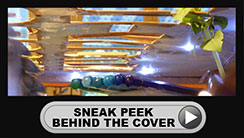
Claire Doole is a former BBC correspondent and international spokeswoman who is passionate about helping people communicate with confidence. Since 2006, she has successfully trained hundreds of professionals in the art of presenting and public speaking, talking to the media, managing communications in a crisis, and writing for the web. In addition, she has coached C-level executives and public figures to give powerful TEDx and TED style talks in Europe and the Middle East. A Swiss and UK national, Claire trains and coaches in French and English.
Claire is also a highly experienced moderator having facilitated panel discussions with government ministers, NGO activists, humanitarians and human rights specialists at major events.
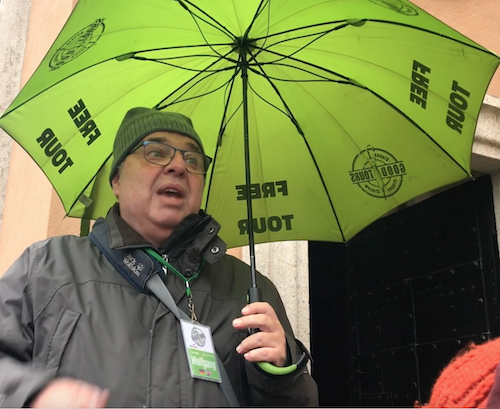
By Claire Doole, www.doolecommunications.com
I have waited two years to tell you this story. In January 2020, I went on a guided walking tour of Vienna with an Austrian friend. It was memorable because it was bitterly cold, and we wondered if we would last the two and a half hours. Forty of us were huddled together at the meeting point stamping our feet and rubbing our hands as snow threatened.
We should not have worried as our guide Wolfgang Rigon from Good Vienna Tours was a master storyteller, who kept us all captivated as he showed us the sights.
We stopped at least a dozen times as he told us a story, bringing alive the glorious and not so glorious history of the city. I recorded a couple of those stories on my phone. Have a watch of a powerful storyteller in action.
He must have told this first story about Marie Theresa, who gave birth to 16 children, hundreds of times. For us, the audience, his passionate delivery made us feel as if he was telling it for the first time.
First one is about Marie Theresa. See how he connects with the audience by making it relevant to the modern-day experience.
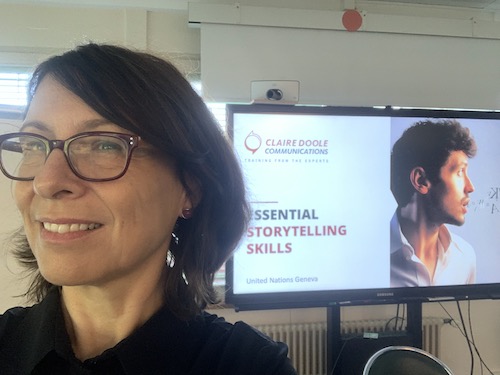
By Claire Doole, Doole Communications
Everyone loves a good story. Our parents read us stories, and we tell them naturally to friends and family. So why is it that in a professional context, we are so reluctant to tell stories?
I ask this question at the start of my storytelling workshops. Participants come up with a number of answers ranging from it is culturally inappropriate, too personal or a lack of ability.
Often people tell me storytelling is too Anglo-Saxon and not appropriate in Mediterranean or other cultures. In fact, I would argue that Africans are fantastic storytellers due to their oral traditions. But I think this reluctance is because people associate storytelling with the high drama of Hollywood with its rollercoaster of emotions.
In fact, storytelling is much simpler; it is about adding colour to the facts.
Ethos, pathos, logos
The Greeks got it right 2,500 years ago. Aristotle said if you want to persuade someone of something, you need to appeal to ethos (credibility), logos (logic) and pathos (stirring emotion in the audience). In the workplace we often have ethos and logos, but shy away from pathos.
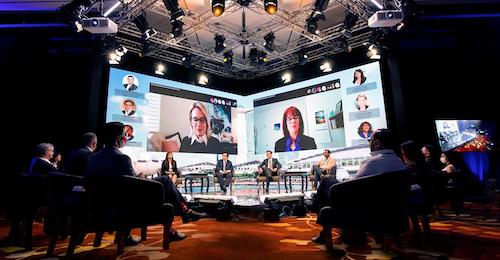
By Claire Doole, Doole Communications
The pandemic is not over, but at least in Europe there is a return to something resembling normality (for the moment at least). At the virtual and hybrid conferences that I moderate, many speakers are talking about the small window of opportunity that exists to reset the world for the better of humanity.
But in my small world of moderating at events nothing much has changed – unfortunately!
I had hoped that some of the best practices from the virtual world – shorter event times, shorter presentations/speeches, greater variety of format and creativity – would become the new normal.
We know that we have to work harder to break through the screen of indifference when an event or meeting is virtual. The hybrid format – focusing on a virtual and in-person audience is challenging technically and editorially. I know some clients who have decided to abandon hybrid in favour of virtual or in-person.
However, editorially I am still seeing the same errors at some, not all, the events that I moderate. Here are some of them:
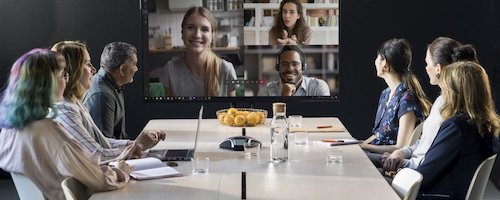
By Claire Doole, Doole Communications
Here in Geneva it is “la rentrée” – meaning back to school or back to work after the summer break.
For some it will be the first time they are back in the office after many months, while for others they may still be working from home.
This means that hybrid meetings are de rigueur (order of the day) with some people meeting in person and others joining remotely.
Hybrid meetings should combine the best of both worlds, but the challenge is to make them inclusive and seamless.
Below are some tips and techniques for setting up and facilitating a hybrid meeting, based on my experience as conference moderator and conversations with organisers and technical suppliers.
Getting the equipment right
The higher the stakes, the higher the production values. A hybrid team meeting does not require the same level of equipment and resources as a townhall or stakeholder meeting. You may for example want to book a professional studio for a more important meeting, rather than set up a studio in your office. However, whatever the status of the meeting, you need to ensure that the online and in-person audience – the “Zoomies” and the “Roomies” can see and hear each other.
Audio equipment – The “Zoomies” join on their laptops or mobile devices that have inbuilt microphones, speakers and cameras, allowing the “Roomies” to see and hear them. Where it gets complex is ensuring the “Zoomies” hear the “Roomies”. “Roomies” need either dedicated microphones for each participant or another option is ceiling microphones which can pick up sound over a certain amount of space. I am no specialist on this, but I highly recommend you contact companies that install videoconferencing systems to ensure proper set up. I know of one organisation that held a hybrid meeting where the echo from the “Roomies” audio made the whole experience a waste of time and resources.
Visual equipment – You need a screen so that the “Roomies” can see the “Zoomies”.
In the room you also need a camera or camera(s), depending on the production values, focused on the entire room as well as the person who is speaking. These cameras are often automated and can zoom in and out on individuals speaking. This image is then relayed back to the online participants through a Zoom link (if that is the software you are using). More complex meetings require more cameras and a technical director who switches between cameras in the room.

By Claire Doole, Doole Communications
Have you seen the play, “Six Characters in search of an Author” by the Italian dramatist, Luigi Pirandello? Actors rehearsing for a play are interrupted by six unfinished characters in search of an author to finalise their story. It was first performed in 1921 and is part of the absurdist genre – breaking down the barriers between fantasy and reality.
Unfortunately, a century later, it is the absurd reality that many moderators can find themselves in when confronted with a cast of speakers selected by the organizers of an event. We struggle to work out why they have been chosen, and what they bring to the subject under discussion. We are then left to build connections between the speakers to create a narrative flow that makes sense to the audience.
Believe me, this can take hours of head scratching and sometimes the connections are just not there, particularly if an organiser has selected someone for non-editorial reasons such as an important donor, someone they want to do busines or engage with in the future or because we must have a representative from all five corners of the globe.
Start with the what and not the who
Organisers often tell me they want a BBC-style discussion. If that is the case, they need to follow the principles of BBC news and current affairs programmes. You start with identifying the news of the moment – for event organizers – this translates as what is top of mind and relevant for the audience.
A lot of events today are focusing on building back better after the pandemic, asking if the world can be more sustainable. The BBC would take an opposing view structure bringing someone from the government to explain how they set new environmental targets to achieve net-zero emissions, and then an environmental activist who says the targets are inadequate. The BBC might also put into the mix an academic who can give context.





